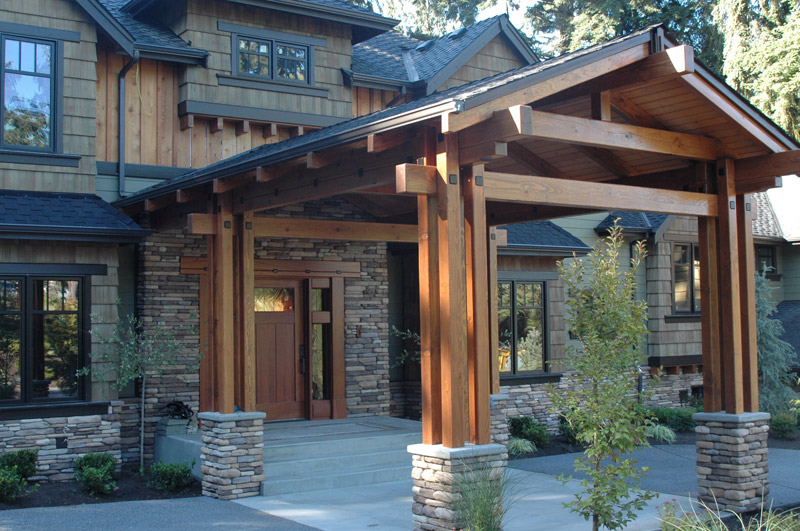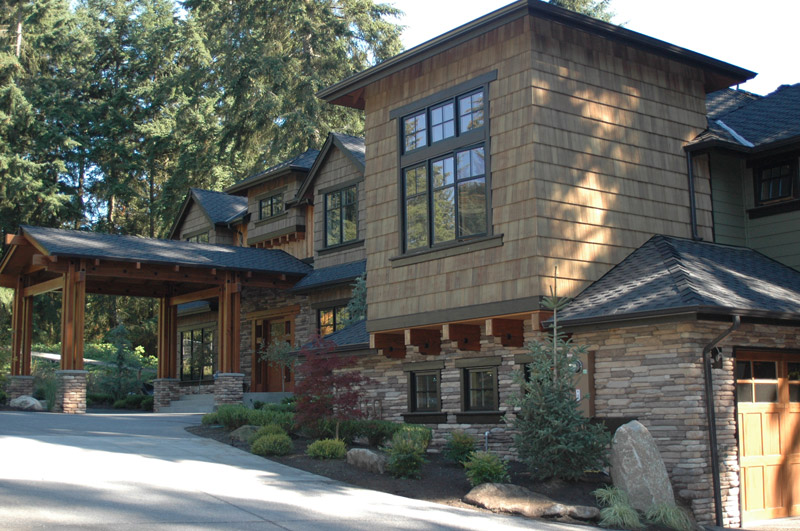

Inspiration
The Craftsman Group finds inspiration in the beauty of the Northwest and the architectural styles of the Victorian, Lodge, and Arts & Crafts periods. The values and designs of the Arts & Crafts Era have been especially impactful. We have long admired the Carpentry Craftsmanship demonstrated during this period, and specifically homes created by Charles & Henry Greene, architects of some of the most celebrated California craftsman residences.
History
Following the Industrial Age, the Arts & Crafts Era was a movement embraced by many in varying fields such as art, architecture and furniture making. It was a time when the artistic community reacted to the Industrial Age by embracing the values and creative efforts of times gone-by, times for example when handcrafted furnishings were plentiful.
Many found that the Industrial Age made cities dirty, noisy and unpleasant places to live. Thus, individuals in the upper class began moving to the country, to the outskirts of the cities. They bought homes and furnishings which featured the fine work of Craftsman, most who used their creative efforts and skills as a means of protesting the proliferation of low-priced, factory made products.
The homes built during this period showcased much of the finest artistic endeavors of the Arts and Crafts Era. As such, it has been stated that Charles & Henry Greene.
Homes put the word “Art” in the Arts & Crafts movement. From the stained art glass windows to the handcrafted furniture style built-ins, their homes represented new ways of considering buildings as examples of Artistic Craft. With their appreciation of Japanese Architecture, Greene & Greene moved beyond the Craftsman and Prairie style of their time by including Asian influences as demonstrated by the finely fitted beams with rounded edges and ebony inlays.
Inspiration in Action
Following the Industrial Age, the Arts & Crafts Era was a movement embraced by many in varying fields such as art, architecture and furniture making. It was a time when the artistic community reacted to the Industrial Age by embracing the values and creative efforts of times gone-by, times for example when handcrafted furnishings were plentiful.
Many found that the Industrial Age made cities dirty, noisy and unpleasant places to live. Thus, individuals in the upper class began moving to the country, to the outskirts of the cities. They bought homes and furnishings which featured the fine work of Craftsman, most who used their creative efforts and skills as a means of protesting the proliferation of low-priced, factory made products.
The homes built during this period showcased much of the finest artistic endeavors of the Arts and Crafts Era. As such, it has been stated that Charles & Henry Greene.
Homes put the word “Art” in the Arts & Crafts movement. From the stained art glass windows to the handcrafted furniture style built-ins, their homes represented new ways of considering buildings as examples of Artistic Craft. With their appreciation of Japanese Architecture, Greene & Greene moved beyond the Craftsman and Prairie style of their time by including Asian influences as demonstrated by the finely fitted beams with rounded edges and ebony inlays.


